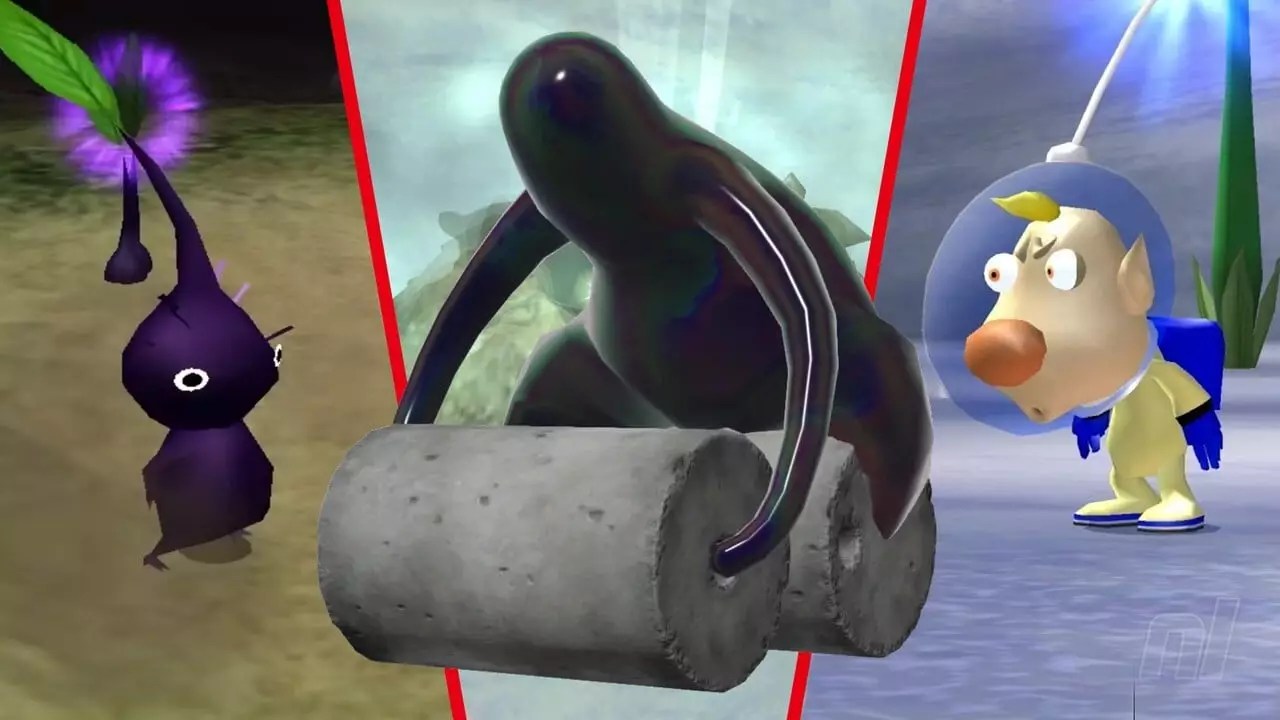The Pikmin franchise, celebrated for its vibrant palette and endearing characters, often has a misleading reputation as a relaxing gaming experience. As we mark the 20th anniversary of Pikmin 2, it’s necessary to peel back this cheerful facade and confront the underlying horror that lurks within its whimsical world. For many players, including myself, the journey through the Pikmin universe is anything but serene. The colorful landscapes and charming creatures stand in stark contrast to the darker, more sinister themes that can emerge, especially when players encounter the series’ more terrifying elements, such as the Waterwraith.
At first glance, Pikmin invites you into a seemingly peaceful and adorable setting, where you command tiny, plant-like beings to solve puzzles and overcome obstacles. However, the true essence of the game lies in its survival mechanics, which underscore the precariousness of life within this vibrant ecosystem. As players traverse the lush environments, a shadowy reality begins to form: the Pikmin are not just cute companions; they are also incredibly vulnerable, susceptible to a range of horrors that can snuff out their lives in an instant.
One of the most memorable adversaries in Pikmin 2 is the Waterwraith—a grotesque, gelatinous creature that embodies childhood fears wrapped in a veil of deception. In the game’s ‘Submerged Castle,’ the Waterwraith is the culmination of terror that strikes fear into players long after their initial encounter. As a child, I vividly remember a moment of sheer panic as I faced this nightmarish being, incapable of understanding how to confront it. The juxtaposition of the adorable Pikmin with the looming threat of extinction worked its way deep into my psyche, elevating a simple gaming session into a defining moment of childhood horror.
The Waterwraith’s terrifying entrance into the gameplay, emerging from the shadows with its crushing rollers, marks a breaking point in the narrative of Pikmin 2. As the protagonist, you are tasked not only with navigating the hazards of the environment but also with coping with the threatening presence of this entity. The initially cheerful task of guiding your Pikmin quickly turns into an adrenaline-fueled struggle for survival, punctuated by the chilling reality that your adorable little helpers can be wiped out at a moment’s notice.
The True Stakes of Pikmin Survival
Players often view cute graphics and lighthearted mechanics, but it’s the omnipresence of danger that ultimately defines the Pikmin experience. Each level tests not just your strategic ability but your emotional resilience as well. The creatures you grow to love are constantly menaced by enemies, environmental traps, and, most hauntingly, the specter of the Waterwraith. As kids, we don’t simply lose our Pikmin in the game; we grieve for them, developing a bond that adds gravity to our failures and triumphs alike.
The underlying horror narrative in Pikmin can be revisited through various lenses, including childhood trauma, the fragility of life, and the omnipresent fear that accompanies navigating unknown environments. Each encounter becomes a lesson in the somber reality that everything, no matter how adorable, has a cost associated with it. This critical understanding is interwoven with nostalgia, emphasizing that our cherished childhood titles often cloak deeper meanings in their gameplay.
The presence of nightmares in an otherwise cheerful game challenges conventional beliefs about player experiences. It compels gamers to confront their fears and insecurities through the lens of virtual reality. Nintendo deftly blends the educational aspects of strategy and resource management with horror and survival elements, creating a platform where players can explore the fusion of joy and terror. Revisiting Pikmin 2 now invokes a mixture of nostalgia and dread, as I grapple with the same fears that made my childhood gaming experience rich and complex.
While many experiences may involve jumping scares or blood and gore, the horror imparted in Pikmin is uniquely psychological. The combination of adorable character design, coupled with the constant threat of annihilation and despair, creates a chilling dichotomy that is truly memorable. Today’s game designers can learn from this approach, as emotional engagement can significantly enhance player experience.
The Future of Pikmin and Its Emotional Legacy
With announcements of potential new titles in the franchise, there is an underlying anticipation mixed with apprehension. Will Pikmin 5 bring back familiar fears, or will it continue to evolve into a more lighthearted venture? For some, the thrill of impending doom is a sentiment they hope to revisit; for others, it might resonate as a haunting reminder of childhood trauma.
Ultimately, Pikmin stands as a classic example of how video games can explore complex emotions while embedding their narratives within a captivating and deceptively cheerful experience. It provokes reflection and reminds us that beneath playful exteriors often lies an intricate tapestry of fear, nostalgia, and growth that defines our journeys through the digital worlds we inhabit.


Leave a Reply